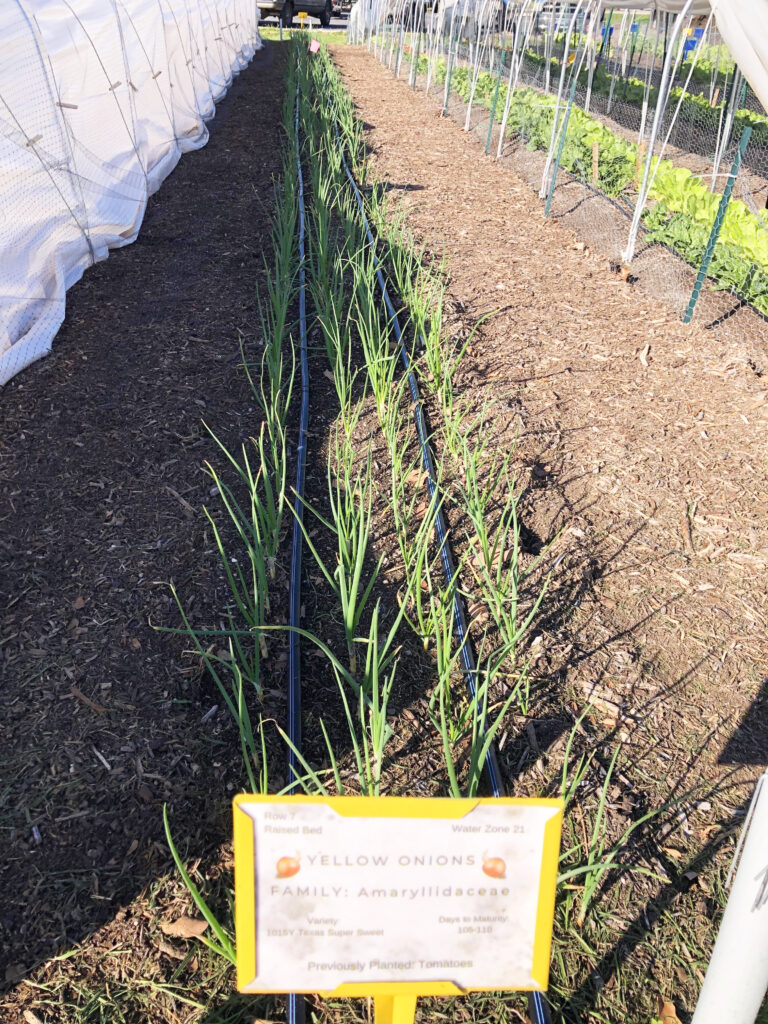Advice from the experts at Texas A&M AgriLife
photos by Master Gardener Sonia Schuertze and Kate Whitney
The seasons are changing, and as spring approaches it is important to know how to prepare your lawn and garden. Kate Whitney, a horticulturalist with the Williamson County AgriLife extension, has ten tips and tricks for gardeners or yard tenders at all levels of expertise to ensure the very best care during these last winter months, and how to prepare for spring.
Prepare vegetables in February.
There are many types of vegetables that should be planted in January and February, and there is still time to prepare them. Asian greens, asparagus crowns, beets, broccoli, cabbage, carrots, cauliflower, and chard are just a few. Whether planted as seeds or transfers, these vegetables will thrive when planted at this time of year. If you need a more flexible planting time, lettuce is a good choice.
Kate says, “These can basically be planted from September until the beginning of March. Onion sets are also great to plant now, and they can be found in any local feed store.”
For more information on what to plant and when, for any kind of plant, there are planting calendars available on the Williamson AgriLife website.

Be ready to cover winter plants.
If winter plants or vegetables are growing, prepare to cover them before big freezes. A freeze cloth is a wise purchase, or old blankets or sheets work just as well. Plastic cover is not recommended; it does not provide insulation and warmth as needed. Also, be sure to stake cloths in and that all their edges are touching the ground to keep cold air away from the plants. You may fill plastic milk jugs with warm water and, before dusk, set the jugs around your plants then throw a cover over them. The water in the jugs will lose heat more slowly than the soil and air, and the warmth it emits will help protect your plants from the cold.
Mulch your plants!
Kate suggests late winter is the best time to add mulch to flowerbeds, vegetable gardens, and around young trees. Adding mulch around plants and packing it into the soil will help prevent weeds and keep plants safe during the cold weather. Since most trees and plants have lost their leaves by January, this process will be easier than in warmer months when they become more lush.
She adds, “Mulch helps regulate soil temperature and keep the soil moist. Younger or more fragile plants like young trees, flowers, and vegetables need this extra insulation and protection to withstand the freezes before spring weather arrives. Moist soil isn’t particularly necessary during the cold weather, but it will help plants keep warm.”
Water plants before big freezes.
Though it may seem like adding water to plants before a freeze might harm plants, it is actually essential to protecting them. Water will moisten and warm the surrounding soil, giving the plants the extra warmth they need. If a plant is too dry before a freeze, it could succumb more easily to the cold.
Cut back plants caught in the last freeze.
For the plants that were not covered before the January freeze, most should be fine and ready to grow back soon. With plants like salvia and lantana, cutting them back until they’re low to the ground will help them come back very well in the spring.
Start basic lawn care.
Putting a layer of granular pre-emptive herbicide and watering it down will prevent weeds from germinating in spring.
The recent freeze hurt all plants.
Don’t worry about missing out on these tips if your plants were lost in the freeze. It caught everybody off guard, and the sudden temperature drop meant plants were not able to acclimate in time to protect themselves.
Potential warm front could be coming.
There are rumors of yet another warm front coming in from the north. As could be seen with many perennial plants that did not lose their leaves until recently, we are having an unseasonably warm winter. This should not harm your winter plants already growing.
Start tool maintenance.
To prepare for the spring, February is a good time to check and refurbish lawn tools. Sharpening lawnmower blades will help cut grass more evenly, which can promote healthy growth. Jagged cuts from dull blades potentially make grass more susceptible to diseases. It is also worthwhile to sharpen pruners.
Take care of winter weeds.
The 2021-22 winter has been unusually warm. This means winter weeds like henbit, clovers, and rescue grass are running rampant. Pulling them or mowing them down will keep them from going to seed.
If meeting in person with other lawn and garden lovers and experts would help, the AgriLife extension hosts numerous gardening classes. Scan the code below for helpful resources, guides, and tips to make your garden thrive.
